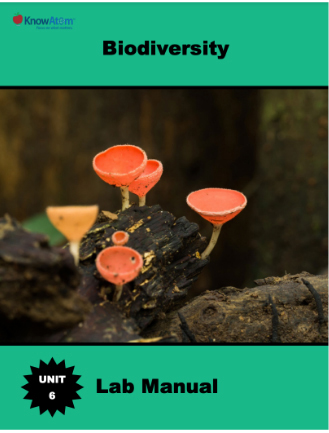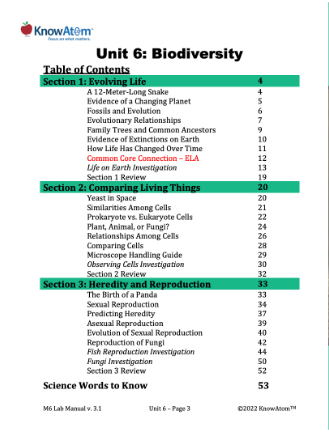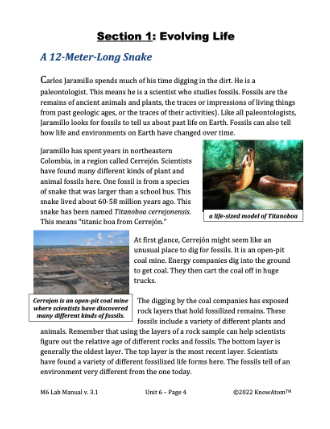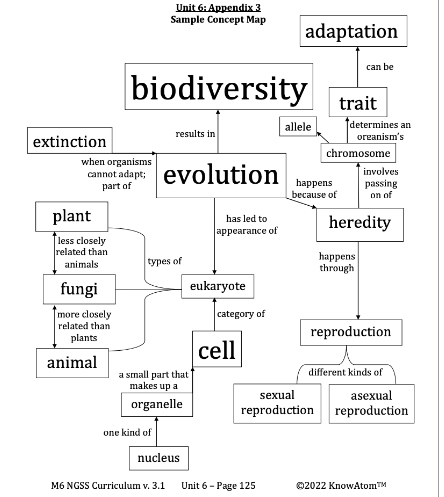Yeast in Space
In 2011, the space shuttle Atlantis blasted off from Earth. In addition to astronauts, it also carried samples of baker’s yeast. This is the same yeast that bakers add to bread to make it rise.
Baker’s yeast is alive. It is a kind of fungus. Like all living things, baker’s yeast is made up of cells. A cell is the smallest unit of life. Cells are alive because they use energy to carry out life functions. Life functions include growing, developing, and getting energy from food. Like all matter, cells are made up of molecules. Living things take in new molecules from air, food, and liquids. These molecules get into the cells. They help them function. Energy is required because it powers all of these actions.
Some organisms, including baker’s yeast, are made up of just one cell. Other organisms, including plants, snakes, and humans, are made up of hundreds, thousands, or millions of cells.
Relationship between Humans and Yeast
Atlantis carried samples of baker’s yeast to deliver them to the International Space Station. The space station is a moving science laboratory that orbits Earth. It is a low-gravity environment. Scientists on the space station wanted to study the yeast cells in low gravity. They care about this because there are many similarities between yeast cells and human cells. Scientists want to learn how the health of humans who spend a lot of time in low-gravity environments might be affected.
Similarities Among Cells
Yeast cells and human cells are similar because they are related to one another. Before we explore that idea, however, we need to first begin with the basic structure of all cells. Cells come in a variety of shapes and sizes, but all cells are surrounded by a cell membrane. The cell membrane is a protective membrane that surrounds a cell. It selects what molecules can enter and exit the cell. All cells are also filled with cytoplasm. Cytoplasm is a jelly-like liquid that fills a cell and holds its structures.
And finally, all cells have genetic information stored in DNA. DNA stands for deoxyribonucleic (pronounced dee-ox-ee-rye- bo-new-clay-ick) acid. It holds the instructions for making proteins. Proteins are large, complex molecules. They play many important roles in the body.
Plant, Animal, or Fungi?
Picture a plant, a fungus, and an animal. You will likely imagine three very different organisms. These differences begin at the level of the cell. Even though the cells of plants, animals, and fungi share many of the same structures, there are also important differences.The differences between plants, fungi, and animals begin with their cells.
To begin, plant cells have cell walls. The cell wall is a stiff, shell-like structure. It surrounds the cell membrane of plant cells and helps plants stand up. Plant cell walls are made of cellulose. Cellulose is a type of sugar molecule.
Fungi cells also have a cell wall. However, their cell wall is made of chitin (pronounced KITE- in). Chitin is the same molecule that makes crab and lobster shells hard. The cell wall is a hard covering that waterproofs fungi cells. It gives them their rigid, threadlike shape.
Animal cells don’t have cell walls. Instead, animals often have skeletons to help support them. Insects have exoskeletons. Because animal cells are not confined by a rigid cell wall, they have evolved more kinds and shapes of cells. This includes those that allow them to move.
Relationships Among Cells
Scientists can compare the similarities and differences among plant, animal, and fungi cells to find out how closely related they are. For example, for many years, scientists thought that fungi were a kind of plant. Think about the external structures of a fungus like a mushroom and a plant. It makes sense that they would seem so closely related. Neither can move and both grow in the ground. This is different from animals. Animals move around to access food, find mates, and avoid predators.
Many multi-celled fungi also grow threadlike structures called hyphae. Hyphae can fuse together into a network of tissues called mycelium. Tissues are made up of cells that live close together and do the same job. Mycelia look similar to plant roots. However, in the late 1990s, scientists made a startling discovery. They realized that fungi are actually much more closely related to animals than they are to plants.
Genetic Comparisons
It took a long time to figure out the evolutionary relationship between animals, plants, and fungi. This discovery required modern technology. Scientists needed to be able to compare the genetic information of plants, animals, and fungi. Remember that every living thing has its genetic information stored in DNA. The exact sequence of an organism’s DNA is unique to it. No other living thing has the exact identical DNA sequence. But all organisms within a species have very similar DNA. A species is a group of genetically similar organisms. For example, humans are a species. Snakes are a species. Baker’s yeast are also a species.
All people have 99.9 percent of their genetic makeup in common. This means that all of the differences among all of the people in the world comes from just 0.1 percent of our DNA. Scientists compare the DNA sequence of different species to infer evolutionary relationships. The more similar the DNA is between two species, the more closely related they are.
In the 1990s, scientists were able to compare the genes of different animal and fungal species. They found that around 1.1 billion years ago, plants evolved into a different species from animals and fungi. At some later point, animals and fungi separated on the evolutionary tree. Scientists still don’t know when this animal-fungi split happened. The chitin in both fungi cell walls and crab shells is also evidence that animals and fungi share a common ancestor and then evolved into different groups after plants evolved into their own group.
Studying Yeast for Medicine
The similarities between human genes and yeast genes led scientists to conduct experiments on yeast cells to better understand human cells. For example, studying yeast cells helped scientists better understand the connections between genes and proteins.
Additionally, at least 20 percent of human genes known to be involved in disease are also found in yeast. There are many ways scientists can use these similarities to help improve human health. These ways include testing new drugs on yeast cells to see how effective the drugs are before trying them on people. This is also why yeast cells are currently orbiting Earth on the International Space Station as scientists monitor the effects of low gravity.










